The Intel NUC8i7HVK (Hades Canyon) Review: Kaby Lake-G Benchmarked
by Ganesh T S on March 29, 2018 1:00 PM EST4K HTPC Credentials
The noise profile of the NUC8i7HVK is surprisingly good. At idle and low loads, the fans are barely audible, and they only kicked in during stressful gaming benchmarks. From a HTPC perspective, we had to put up with the fan noise during the decode and playback of codecs that didn't have hardware decode acceleration - 4Kp60 VP9 Profile 2 videos, for instance. Obviously, the unit is not for the discerning HTPC enthusiast who is better off with a passively cooled system.
Refresh Rate Accuracy
Starting with Haswell, Intel, AMD and NVIDIA have been on par with respect to display refresh rate accuracy. The most important refresh rate for videophiles is obviously 23.976 Hz (the 23 Hz setting). As expected, the Intel NUC8i7HVK (Hades Canyon) has no trouble with refreshing the display appropriately in this setting.
The gallery below presents some of the other refresh rates that we tested out. The first statistic in madVR's OSD indicates the display refresh rate.
Network Streaming Efficiency
Evaluation of OTT playback efficiency was done by playing back the Mystery Box's Peru 8K HDR 60FPS video in YouTube using Microsoft Edge and Season 4 Episode 4 of the Netflix Test Pattern title using the Windows Store App, after setting the desktop to HDR mode and enabling the streaming of HDR video.
The YouTube streaming test, unfortunately, played back a 1080p AVC version. MS Edge utilizes the Radeon GPU which doesn't have acceleration for VP9 Profile 2 decode. Instead of software decoding, Edge apparently requests the next available hardware accelerated codec, which happens to be AVC. The graph below plots the discrete GPU load, discrete GPU chip power, and the at-wall power consumption during the course of the YouTube video playback.
Since the stream was a 1080p version, we start off immediately with the highest possible bitrate. The GPU power consumption is stable around 8W, with the at-wall power consumption around 30W. The Radeon GPU does not expose separate video engine and GPU loads to monitoring software. Instead, a generic GPU load is available. Its behavior is unlike what we get from the Intel's integrated GPUs or NVIDIA GPUs - instead of a smooth load profile, it has frequent spikes close to 100% and rushing back to idle, as evident from the red lines in the graphs in this section. Therefore, we can only take the GPU chip power consumption as an indicator of the loading factor.
A similar graph for the Netflix streaming case (16 Mbps HEVC 10b HDR video) is also presented below. Manual stream selection is available (Ctrl-Alt-Shift-S) and debug information / statistics can also be viewed (Ctrl-Alt-Shift-D). Statistics collected for the YouTube streaming experiment were also collected here.
It must be noted that the debug OSD is kept on till the stream reaches the 16 Mbps playback stage around 2 minutes after the start of the streaming. The GPU chip power consumption ranges from 20W for the low resolution video (that requires scaling to 4K) to around 12W for the eventually fetched 16 Mbps 4K stream. The at-wall numbers range from 60W (after the initial loading spike) to around 40W in the steady state.
Update: I received a request to check whether the Netflix application was utilizing the Intel HD Graphics 630 for PlayReady 3.0 functionality. The screenshot below confirms that the 4K HEVC HDR playback with Netflix makes use of the Radeon RX Vega M GH GPU only.
Decoding and Rendering Benchmarks
In order to evaluate local file playback, we concentrate on Kodi (for the casual user) and madVR (for the HTPC enthusiast). Under madVR, we decided to test out only the default out-of-the-box configuration. We recently revamped our decode and rendering test suite, as described in our 2017 HTPC components guide.
madVR 0.92.12 was evaluated with MPC-HC 1.7.15 (unofficial release) with its integrated LAV Filters 0.71. The video decoder was set to Direct 3D mode, with automatic selection of the GPU for decoding operations. For hardware-accelerated codecs, we see the at-wall power consumption around 35-40W and the GPU chip power consumption to be around 10W. For the software decode case (VP9 Profile 2), the at-wall power consumption is around 90W, and the GPU chip power consumption is around 18W (the power budget is likely for madVR processing of the software-decoded video frames).
One of the praiseworthy aspects of the madVR / MPC-HC / LAV Filters combination that we tested above was the automatic switch to HDR mode and back while playing the last couple of videos in our test suite. All in all, the combination of playback components was successful in processing all our test streams in a smooth manner.
The same testing was repeated with the default configuration options for Kodi 17.6. The at-wall power consumption is substantially lower (around 30W) for the hardware-accelerated codecs. The GPU chip power is around 8W consistently for those. For the VP9 Profile 2 case, the at-wall number rises to 70W, but, there is not much change in the GPU chip power. We did encounter a hiccup in the 1080i60 VC-1 case, as the playback just froze for around 5 - 10s - evident in the graph below (the files were being played off the local SSD).
We attempted to perform some testing with VLC 3.0.1, but, encountered random freezes and blank screen outputs while using the default configuration for playing back the same videos. It is possible that the VLC 3.0.1 hardware decode infrastructure is not as robust as that of the MPC-HC / LAV Filters 0.71.0 combination, and the hardware acceleration APIs behave slightly differently with the Radeon GPU compared to the behavior seen with Intel's integrated GPU and NVIDIA's GPU.
Moving on to the codec support, while the Intel HD 630 is a known quantity with respect to the scope of supported hardware accelerated codecs, the Radeon RX Vega M GH is not. DXVA Checker serves as a confirmation for the former and a source of information for the latter.
We can actually see that the codec support from the Intel side is miles ahead of the Radeon's capabilities. It is therefore a pity that users can't somehow set a global option to make all video decoding and related identification rely on the integrated GPU.
Intel originally claimed at the launch of the Hades Canyon NUCs that they would be able to play back UltraHD Blu-rays. The UHD BD Advisor tool from CyberLink, however, presented a different story.
After a bit of back and forth with Intel, it appears that the Hades Canyon NUCs will not be able to play back UHD Blu-rays. Apparently, the use of the Protected Audio Video Path (PAVP) in the integrated GPU is possible only if the display is also being driven by the same GPU. It turned out to be quite disappointing, particularly after Intel's promotion of UHD Blu-ray playback and PAVP as unique differentiating features of the Kaby Lake GPU.








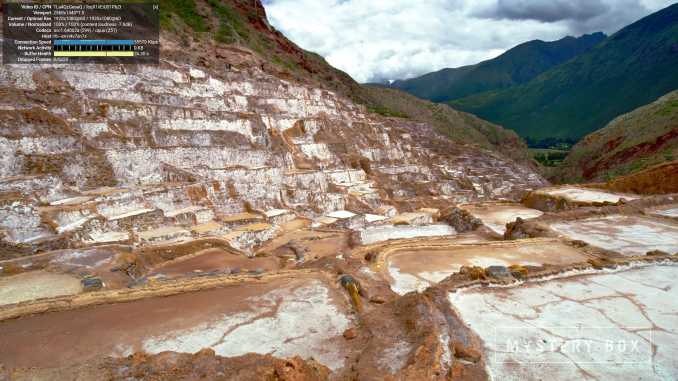

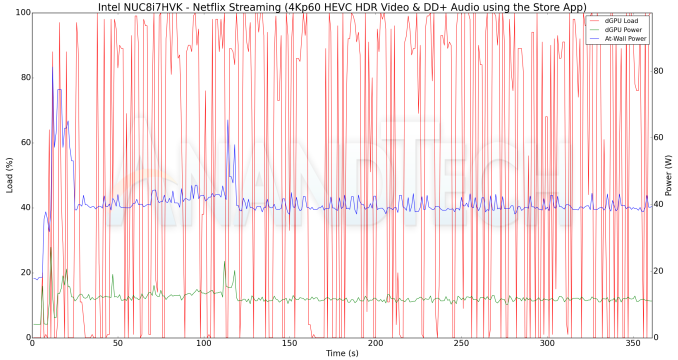
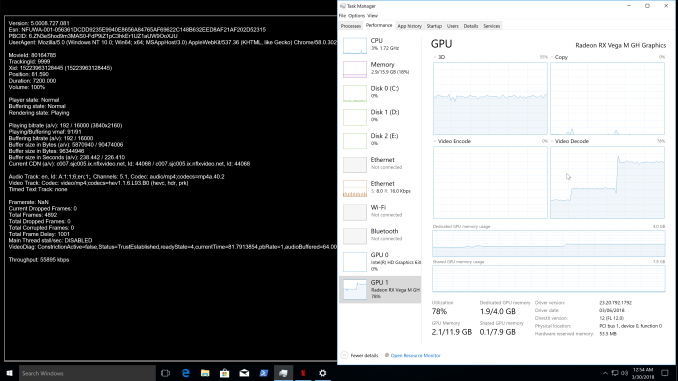
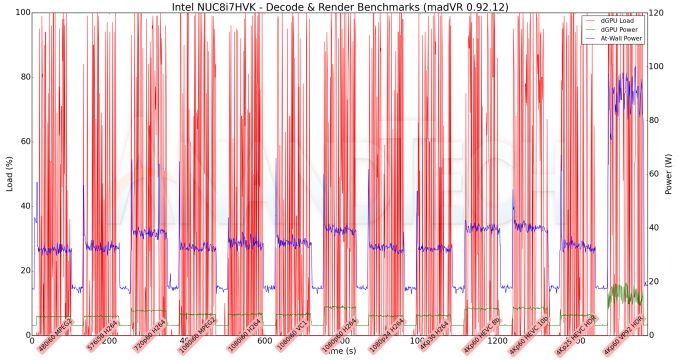
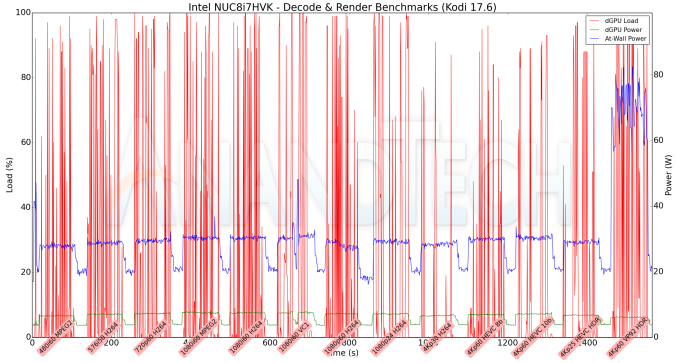
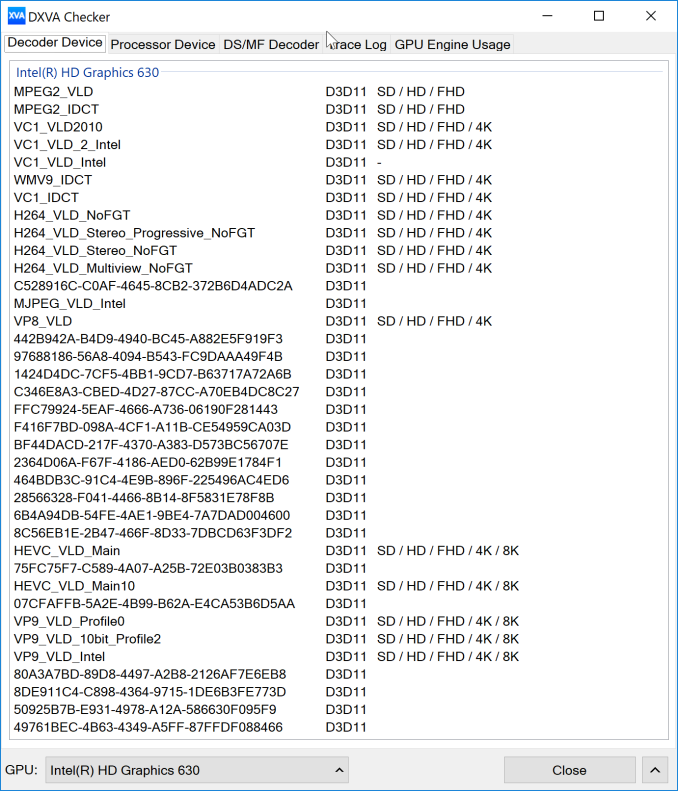
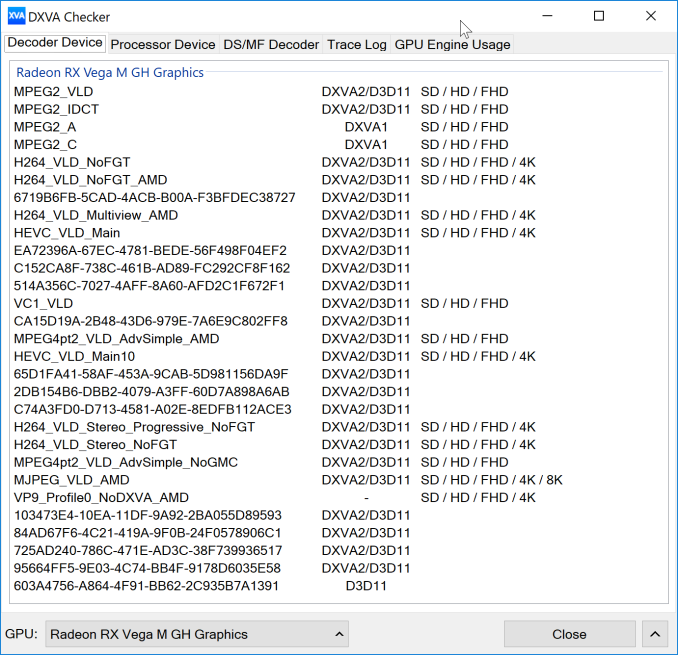
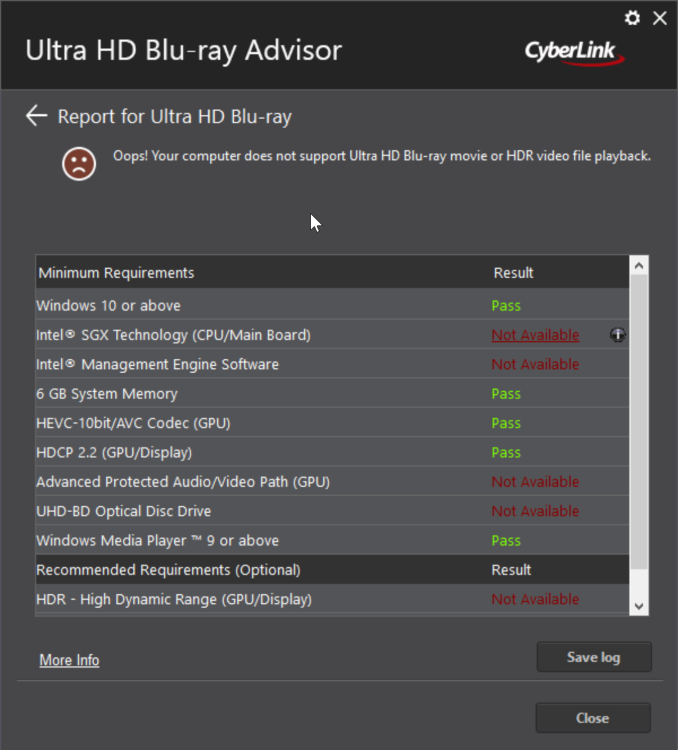








124 Comments
View All Comments
nul0b - Thursday, March 29, 2018 - link
Can Linux run on this? Ubuntu? Is their driver support?I can run Ubuntu on my current NUC but was wondering w/ this new Vega GPU if it can run Linux? Any benchmarks or info? Please begin providing this.
mode_13h - Friday, March 30, 2018 - link
Um, yeah. Look before you leap, on this one. Definitely don't just assume it'll work, because AMD still seems to be running behind on getting support for their GPUs into the mainline kernel.Maybe, with proprietary drivers, on Ubuntu 18.04?
Lolimaster - Friday, March 30, 2018 - link
I wouldn't call Prime95+Furmark a load test, it's totally unrealistic.How about giving it a BF1 run + HEVC reproducing on MPC or a CB15 run?
Lolimaster - Friday, March 30, 2018 - link
Specially for gpu's, you'll never get that kind of load during a game session.ganeshts - Friday, March 30, 2018 - link
Yes, that is for sure - we adopt a power virus test to determine the suitability of the thermal solution of the system. The AIDA stress test, on the other hand, is more realistic - we have graphs for both, so that readers can understand and interpret the behavior under both scenarios.Trixanity - Friday, March 30, 2018 - link
I believe that hardware acceleration is broken in VLC on Vega. It should be fixed in 3.0.2 which seems to have been delayed to iron out a lot of bugs that has plagued the 3.0 release.M9 - Friday, March 30, 2018 - link
Hi, I'm pretty much a novice seeking advice, i find this interesting for a small computer for my 5th wheel camper. Electrial needs may be an issue? The unit has 50 amp service, but many campgrounds only provide 30 amps. Keep in mind that's what's available for the invite unit includingHot water heater, AC, fridge & an electric fireplace, LED lighting so I don't think lighting is much of an issue. No 4K UHD disc playback is a disappointment, but honestly I can't really tell it's any better on my Samsung series 6 4K TV than a regular BLU-RAY upgraded too 4K. Any thoughts or advice appreciated, thanks.
Zingam - Friday, March 30, 2018 - link
50 Amps? Are you going to power a metal smelting furnace?M9 - Saturday, March 31, 2018 - link
No, just saying I don't have as much electricity available as a typical house or apartment.HStewart - Friday, March 30, 2018 - link
Just FYI, I was able to purchase a new Dell XPS 15 2in1 but my cost was quite expensive - almost $2500.But I purchase the i7 4K version with 512G SSD. - the base i5 version was $1499 not $1299. I guess after CES 2018, Dell decided to jack the price up.
I was happy to see the 3D rendering performance high on this NUC - even though my plan is using the following applications
1. Lightwave 3D 2018
2. Photoshop CS 5 ( yes older version - don't care for new stuff )
3. Painter 2018 ( new to it )
I am suppose to get it around 18th of April - I can retry my Lenovo Y50 as my primary machine.